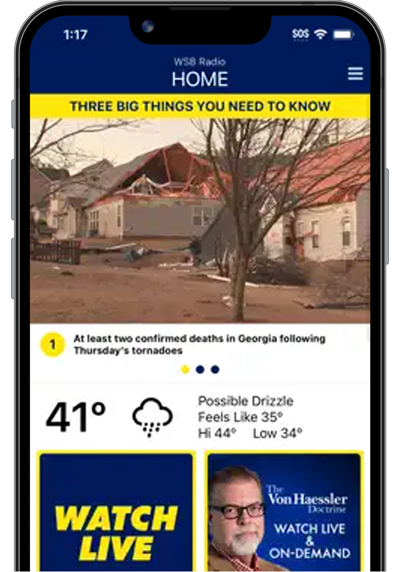ATLANTA — Greg Levine is ready with his list: "Everything from East Atlanta to Ormwood, Candler Park, Lake Claire, Virginia Highlands, Morningside, Poncey Highlands is starting to see tear-downs and tree removal, the Old Fourth Ward has critical issues, Midtown, Buckhead.” Levine goes on. "West End and Adair Park, and Sylvan Hills neighborhoods are starting to talk about putting big homes in now and removing the trees when they remove a small home."
Levine is co-Executive Director at Trees Atlanta, which advocates for preserving existing trees and replacing those lost to development. He says that list encompasses city neighborhoods with tree cover – otherwise known as canopy - under threat due to development. "It's not going to be a positive outcome for the city if we don't really figure out a good way to fix this,” Levine tells WSB Radio.
It’s a reference to Atlanta’s laws meant to protect trees. For the first time in 20 years, the Tree Protection Ordinance is getting a fresh look for a re-write. Last week, the city hosted four public meetings for input ahead of the crafting of a draft later this summer.
The threat to Atlanta’s old, prominent shade trees says Levine, is development – whether single-lot or high density - ramped up in recent years. “The (current) ordinance allows for trees to be removed and money just being put into a (recompense) fund. That's good because it helps slow people removing trees when they develop a property, but what it doesn't do is get them necessarily to redesign or design a project that actually saves more canopy,” says Levine.
He estimates Atlanta’s tree canopy is down to 47 percent. Up to 80 percent of that remaining canopy sits on zoned residential property according to Levine. "The majority of what we're losing at the moment is a single-family house being removed, and a much larger single-family house taking its place." When that happens, existing trees can be in danger. Across the board, Levine’s group would like to see Atlanta’s tree canopy rise to 50 percent.
Levine connects the dots from a loss of trees to an unhealthier city, less desirable city, to an eventual effect on its economy.
The current ordinance effectively determines what fee a builder or property owner would pay to remove a tree. Tim Keane, Atlanta’s head of city planning, previously told the Atlanta Journal-Constitution “the ordinance doesn’t protect trees. It makes you pay for it.”
A builder’s perspective? "The biggest issue that the city of Atlanta has as it pertains to the trees in general is the illegal destruction of trees, which has very little to do with a lot of our development activity as a state licensed builder,” Van Hardimon tells WSB Radio. He owns Van Hardimon Homes, and serves as president of the Inner Atlanta Chapter of the Greater Atlanta Home Builders Association. "We all go out of our way as professional state licensed builders to work with trees that are actually on the property, because they are very, very expensive for us to remove."
Hardimon says he wants to make sure developers get a fair shake in discussions on a revamped ordinance. Right now, he says they have that voice, but going forward “we want that dialogue to continue throughout the process, especially after the first draft." Trees Atlanta’s Levine says developers should indeed have a fair voice at the table, but also wants from them solutions to get the canopy back to 50 percent. "We don't want to take away the right to develop a piece of land, but we do want to see that some trees are saved, not just money that goes into a recompense fund,” says Levine.
The process to revisit Atlanta’s tree ordinance began with a consulting firm hired last year to run an ecology study. That led to some hard numbers to work with, into last week’s public meetings, with a draft of a new ordinance to come, followed by public forums.
Simply put from Levine's perspective, "this is a critical time for Atlanta's history."












